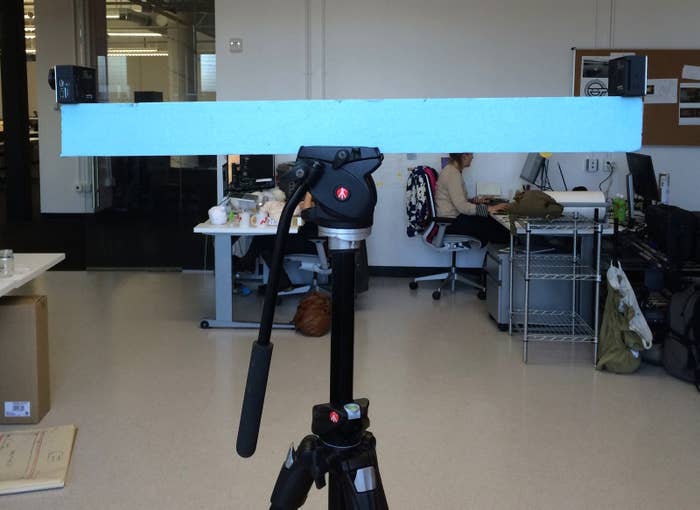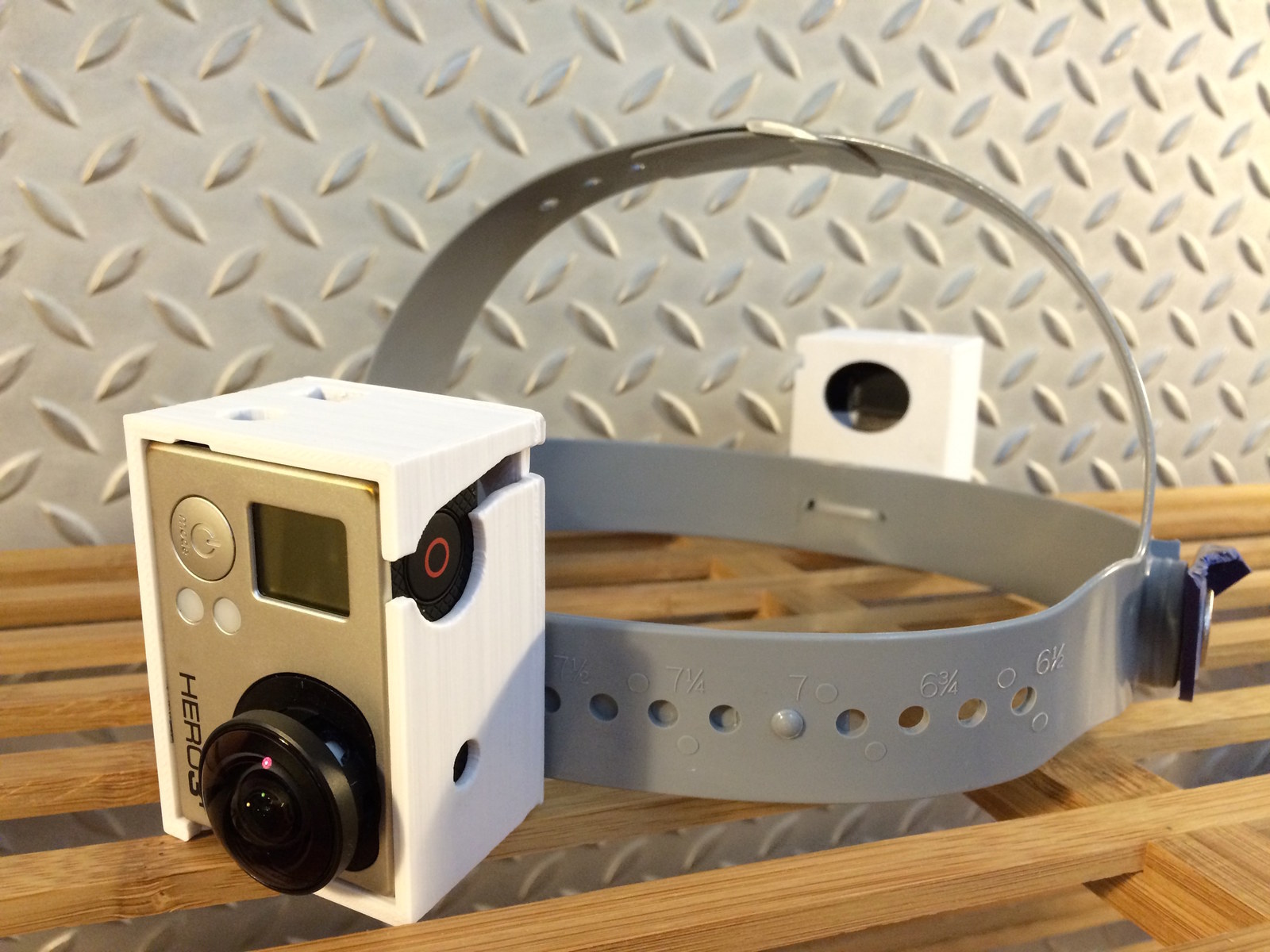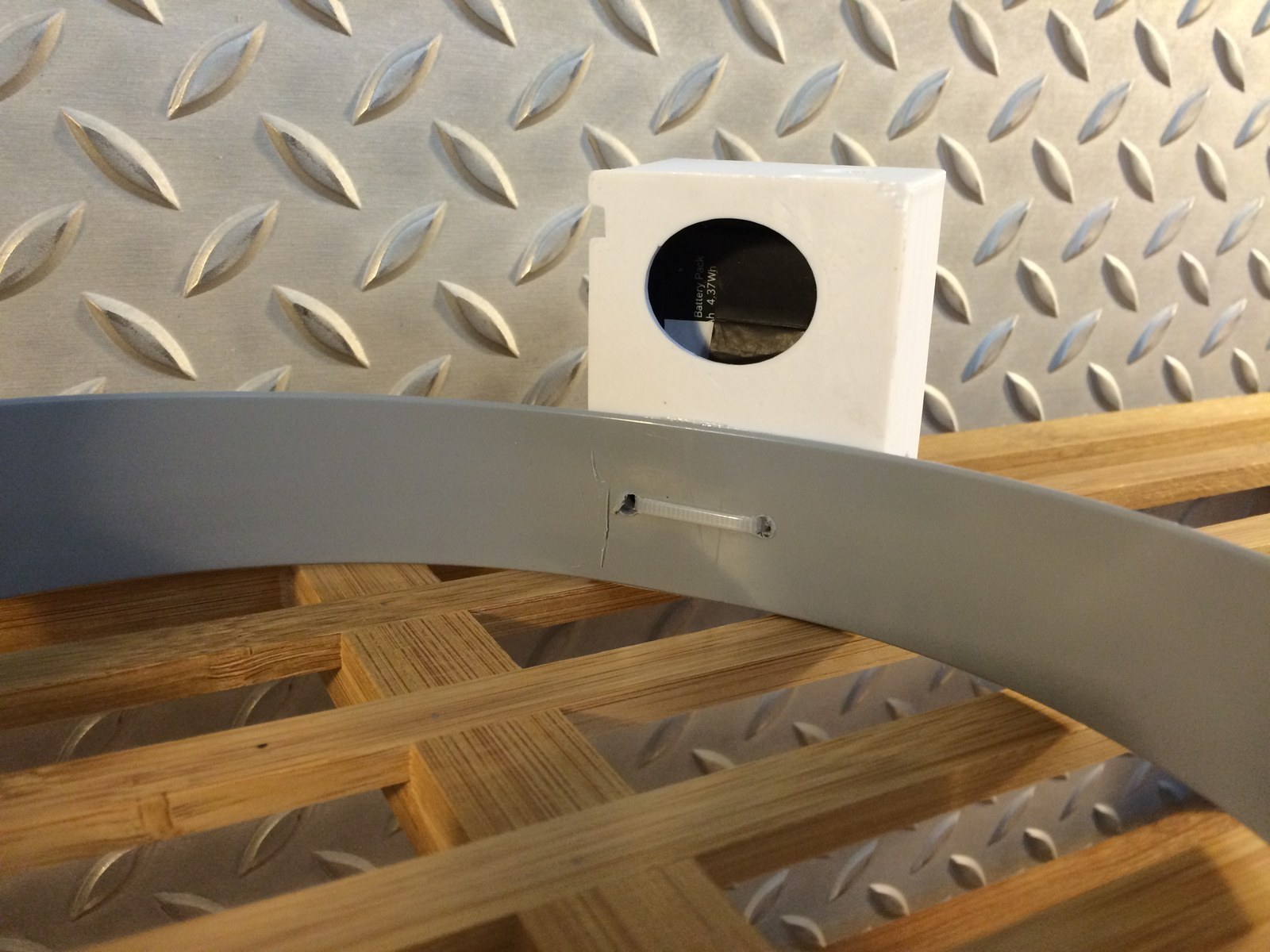I’ve continued to explore camera designs and placements for shooting 360 video, and recently purchased a pair of 220-degree lenses so I could experiment with hiding a drone in the stitched together footage from two GoPro cameras. The lenses cost about $50 each on aliexpress.com (search for "220 degree lens m12"). The 220-degree field-of-view is so large that these lenses, placed in two back-to-back GoPro cameras, can sit 2.25 feet apart and still produce a 360-degree image.

The large blind spot in-between the cameras opens up many creative possibilities for 360-degree camera placement, like on someone’s head. With one camera on the forehead, and one camera on the back of the head, the wearer’s head disappears, but the rest of their body, beginning with the shoulders, remains in view. This perspective allows the viewer to inhabit the headspace of whoever wears the camera, opening up interesting storytelling possibilities.
For our first attempt at head-mounting a camera rig, we cable tied two GoPros with 220-degree lenses to Open Lab fellow Ainsley Sutherland’s head. It basically worked!
The cable ties failed to keep the GoPros well aligned on Ainsley’s head, so I made a system to make it easier to wear the two cameras.

I cut the plastic head strap assembly from a $14 face shield, printed mounting shells for the two GoPros, and then fastened the mounts to the front and rear of the head strap with 2.5mm wide cable ties.

I mounted the two cameras facing the user’s front and back, positioning them so that both lenses sit back-to-back on the same plane, making it easier to stitch the videos together.

I tested out the headcam at a recent protest at the Embarcadero, beside Superbowl City. Hundreds of protesters and homeless rights activists gathered to protest the ongoing housing crisis and the city’s recent treatment and removal of homeless people during preparations for the Super Bowl and Super Bowl City, a popup fan village located at the Embarcadero on land often occupied by homeless tent encampments.
View this video on YouTube
For the best viewing experience, watch this on your mobile device.
This was a great opportunity to try the headspace immersion capabilities of the 360 headcam. The video I produced by wearing the cameras at the protest enables the viewer to get a sense of what it was like standing in the crowd and moving around the space occupied by the protesters, witnessing events unfold as though you were there. Unlike using a single camera on my forehead to capture a point-of-view shot in the direction I’m looking, this 360 headcam allows the viewer to look up, down, and behind whenever they wish, instead of limiting them to the direction I am facing.
There are issues with 360-degree video captured using this first version of the headcam. All of my head movements are recorded in the video, providing unstable footage. How much movement is acceptable?
Given the distance between cameras there is also a blind spot that extends outwards from the left and right sides of my head, causing objects and people to disappear or get cut if they are too close to either of my sides. In situations where there is nothing within a few feet of my sides this blind spot will not be an issue. But standing in a crowd will yield less than perfect results, as the video shows.

Open Lab for Journalism, Technology, and the Arts is a workshop in BuzzFeed’s San Francisco bureau. We offer fellowships to artists and programmers and storytellers to spend a year making new work in a collaborative environment. Read more about the lab.

